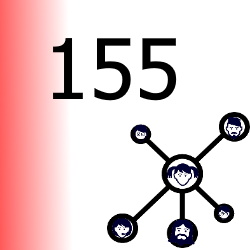Napster and beyond: How on-line music can transform the dynamics of musical production and consumption in DIY subcultures
Abstract
Online music distribution has been changing since Napster first appeared in 1999, and it certainly caused several impacts on musical production, distribution, consumption and sharing dynamics, particularly among those subcultures that are notoriously active at the margins of the music industry. This paper aims to discuss how the emergence of Napster opened a way for producing, sharing and consuming music that has benefited DIY youth cultures in Brazil, with a special focus on the straight edge community in the city of São Paulo. This article is based on ethnographic fieldwork carried out between 2011 and 2013, which had online music as a permeating analytical subject. Even after three decades of existence, straight edge still has significant activities around music festivals and DIY musical production, affirming that the Internet — from Napster to social networks — improved their access to the international scene and bands (mainly through downloads, authorized or illicit), as much as it has served as a window for showing their own work to the world. Online music has a crucial role in São Paulo straight edge: some bands cannot release an LP, but they can put it on the Internet to share with potentially interested people and with friends. Moreover, the simultaneity of distributive forms is also interesting, since both digital music and vinyl records co-occur among them. Furthermore, discussions around piracy and ‘illegal’ digital file sharing are an important feature of this context, stressing the perspectives straight edgers have on copyright — whether it belongs to them or to other parties.References
Michael Azerrad, 2001. Our band could be your life: scenes from the American rock underground 1981–1991. Boston: Little, Brown.
Yochai Benkler, 2006. The wealth of networks: How social production transforms markets and freedom. New Haven, Conn.: Yale University Press.
Mark Coleman, 2005. Playback: From the Victrola to MP3, 100 years of music, machines, and money. Cambridge, Mass.: Da Capo Press.
Christopher Driver, 2011. Embodying hardcore: rethinking ‘subcultural’ authenticities, Journal of Youth Studies, vol. 14, nr 8, pp. 975–990. doi: http://dx.doi.org/10.1080/13676261.2011.617733, accessed on 10 September 2014.
Kevin Dunn, 2008.“Never mind the bollocks: the punk rock politics of global communication, Review of International Studies, vol. 34, suppl. S1, pp. 193–210. DOI: http://dx.doi.org/10.1017/S0260210508007869, accessed on 10 September 2014.
Patryk Galuszka, 2012. Netlabels and democratization of the recording industry, First Monday, vol. 17, nr 7, at http://firstmonday.org/article/view/3770/3278, accessed 24 May 2014. DOI: http://dx.doi.org/10.5210/fm.v17i7.3770, accessed on 10 September 2014.
Ross Haenfler, 2006. Straight edge: Clean-living youth, hardcore punk, and social change. New Brunswick, N.J.: Rutgers University Press.
Joseph Menn, 2003. All the rave: The rise and fall of Shawn Fanning’s Napster. New York: Crown Business.
Alan O’Connor, 2008. Punk record labels and the struggle for autonomy: The emergence of DIY. Lanham, Md.: Lexington Books.
Sarah Thornton, 1996. Club cultures: Music, media, and subcultural capital. Hanover, N.H.: University Press of New England.
Robert Wood, 2006. Straightedge youth: Complexity and contradictions of a subculture. Syracuse, N.Y.: Syracuse University Press.

